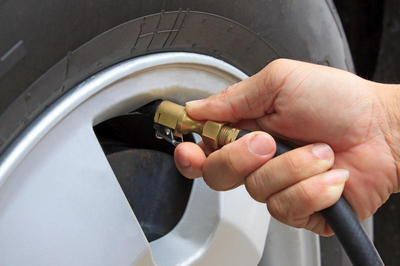
Nitrogen Vs. Air in tires
Content
If you have had your tires changed within the last two or three years, you may have run into nitrogen and air issues in tire disputes. For years, commercial vehicle tires such as aircraft and even high-performance racing tires have used nitrogen as the inflation gas of choice for several reasons. However, in recent years, professional automotive professionals, especially tire manufacturers and aftermarket vendors, have introduced nitrogen as a good choice for everyday drivers.
Is nitrogen worth the extra effort and expense of inflating tires with this rather inert gas? In the information below, we will discuss a few common consumer specifications that will determine whether normal air or nitrogen is better.
Cost and convenience: regular air
While there is a price to pay for new tires, air is usually not one of them—unless you opt for an alternative to nitrogen. Generally speaking, tire fitting centers will charge extra for inflating your tires with nitrogen instead of regular air. If nitrogen is offered at your local tire or service center, you will likely be charged between $5 and $8 per tire if they are inflated at the time of installation. For those considering switching from regular air to pure nitrogen (at least 95% pure), some tire fitting locations will charge $50 to $150 for a complete nitrogen upgrade.
This may beg the question: why is replacing air with nitrogen more expensive than using it from the start? Well, some tire experts think it's "extra work" to break the bead of the old tire, make sure all the "air" is bled out, and then fit the bead to the rim with fresh nitrogen. It's also a little risky to "burst" a tire without hurting it. In addition, nitrogen is not available at all tire fitting locations, so it is best to use regular air for convenience.
Maintaining constant tire pressure: nitrogen
Every tire made is not completely solid. Rubber has several microscopic holes or pores that allow air to seep out for a longer period of time. This will gradually inflate or depressurize the tires depending on temperature and other conditions. The general rule of thumb is that for every 10 degrees of change in tire temperature, the tire shrinks or expands by 1 psi or PSI. Nitrogen is made up of larger molecules than regular air, making it less susceptible to air pressure loss.
To prove this fact, a recent study by Consumer Reports compared tires filled with nitrogen to tires filled with regular air. In this study, they used 31 different tires and filled one with nitrogen and the other with regular air. They left each tire outdoors under the same conditions for a calendar year and found that tires with regular air lost an average of 3.5 lbs (2.2 lbs) and with nitrogen only XNUMX lbs.
Fuel economy: no difference
While many tire shops may tell you that nitrogen-filled tires provide better fuel economy than regular tyres, there is simply no evidence to support this claim. According to the EPA, air pressure is the main contributor to lower fuel consumption when using tires. As noted above, nitrogen offers a slight advantage in this category. The EPA estimates fuel consumption will drop by 0.3 percent per pound of inflation across all four tires. As long as you check your tires monthly for the correct pressure as recommended, the change in fuel economy will not be significant.
Tire Aging and Wheel Corrosion: Nitrogen
Contrary to popular belief, the ordinary air we breathe is made up of more than just oxygen. In fact, it's actually 21 percent oxygen, 78 percent nitrogen, and 1 percent other gases. Oxygen is known for its ability to retain moisture and does so inside the tire/wheel when installed as compressed air. Over time, this excessive moisture can corrode the tire's inner carcass, leading to premature aging, damage to steel belts, and even contributing to the development of rust on steel wheels. Nitrogen, on the other hand, is a dry, inert gas that does not bond well with moisture. For this reason, tire shops use nitrogen with a purity of at least 93-95 percent. Because moisture inside a tire is a major source of premature tire failure, dry nitrogen has the edge in this category.
When you look at the big picture of the nitrogen versus air tire debate, each offers unique benefits to consumers. If you don't mind paying the extra cost, using a nitrogen boost is a good idea (especially for those who live in colder climates). However, at the moment there is not enough reason to rush to your local tire shop for a nitrogen change.
